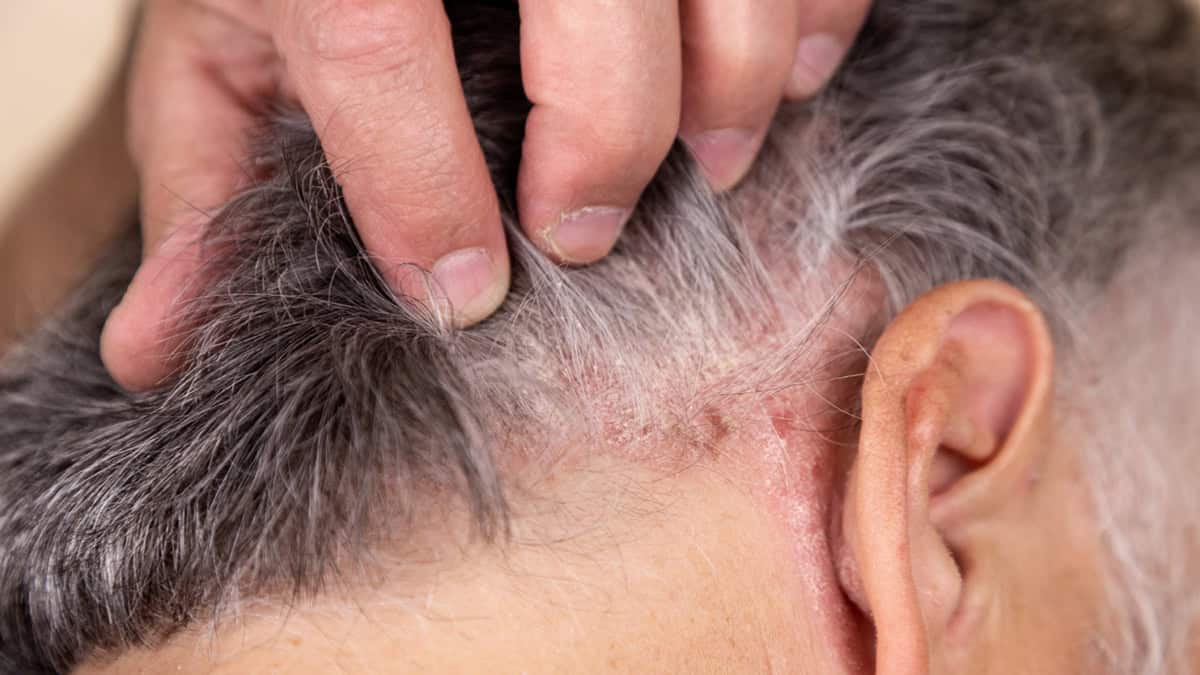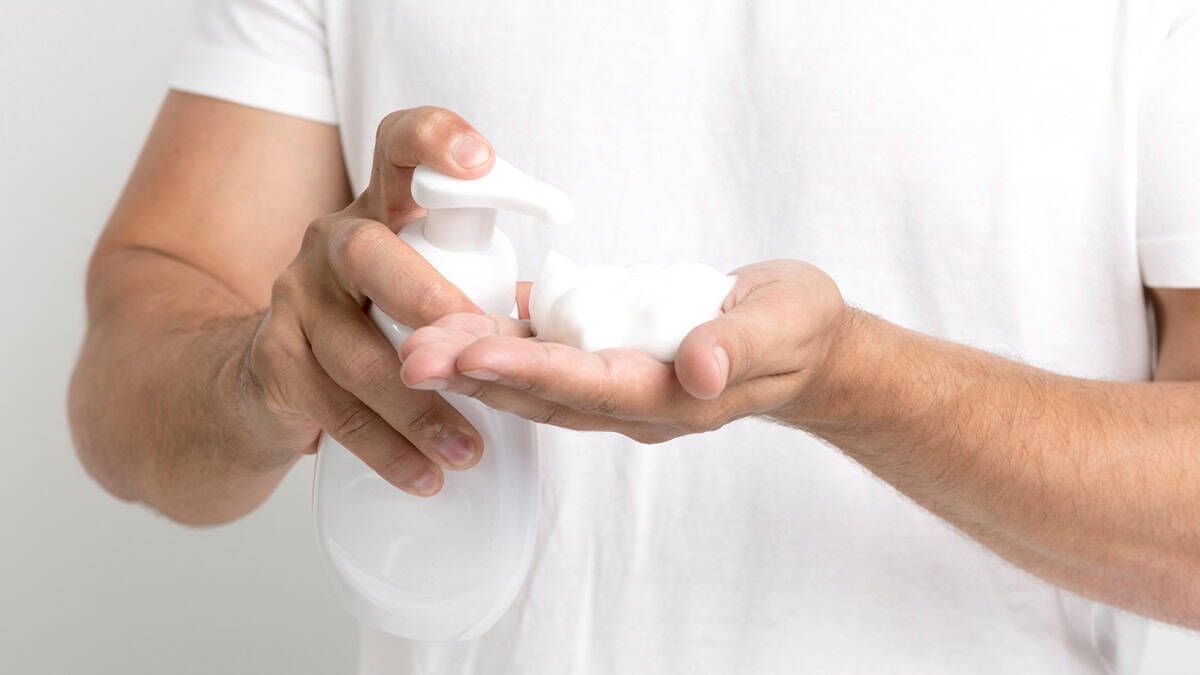Everything You Need to Know About Zoryve (Roflumilast) Foam
speciality medications

Struggling with seborrheic dermatitis?
Looking for a more modern, non-steroidal solution for your itchy, inflamed skin?
(Especially if it’s on your scalp or face?)
If so, you may have come across Zoryve foam in your research. It’s a popular medication that can provide relief for several skin-based inflammatory conditions.
But, if you’ve found it online, you may have blanched at the sticker price ... or seen conflicting articles about how well it (really) works.
We’re here to help you parse through the data so you can make the best possible decisions for you and your health.
Here, we’ll answer your most common questions about Zoryve foam.
Let’s start with the basics.
What Is Zoryve Foam? Meet the New Topical Treatment
Zoryve foam is a prescription topical treatment that’s gaining attention for its effectiveness in treating inflammatory skin conditions … without steroids.
Zoryve (roflumilast) is a type of medication known as a phosphodiesterase-4 (PDE4) inhibitor. This means it stops PDE4 from completing its normal activities – and since PDE4 is an essential part of the human body’s inflammatory response, Zoryve can effectively reduce inflammation.
Zoryve works, specifically, by calming the skin’s inflammatory response at a cellular level. This can help offer relief from itching, redness, and flaking – without some of the long-term side effects associated with corticosteroids.
Here’s what makes the foam formulation unique.
Zoryve foam is:
- Approved for seborrheic dermatitis in adults and children 9 and older
- Designed specifically for hair-bearing areas like the scalp, face, and chest
- Lightweight, non-greasy, and fragrance-free
- Engineered for easy, targeted use (it comes in a pressurized foam canister)
Generally, patients apply it once daily to an area of concern.
Zoryve is also available as a cream, but the foam is specially formulated to work better on areas where hair can make application and absorption more difficult.
What Is Zoryve Foam Used For?
Zoryve foam is primarily used to treat seborrheic dermatitis.
Seborrheic dermatitis is a common skin condition. It tends to come with:
- Red, scaly patches
- Oily or flaky buildup (especially around the scalp, eyebrows, or nose)
- Itching and inflammation
If you’ve ever been told you have dandruff, seborrheic eczema, or a flaky scalp, there’s a good chance you’re quite familiar with these symptoms – and an equally good chance that Zoryve foam could be worth learning more about.
Zoryve foam is potentially a good fit for a patient when their affected skin is covered by hair, if they’ve found other ointments or creams to be a bit too thick or greasy, or if long-term steroid use isn’t ideal for any reason.
What About Psoriasis? Can Zoryve Foam Treat That?
Short answer:
Zoryve foam isn’t approved to treat psoriasis, so, no.
Slightly longer answer: You’re not wrong for wondering.
A similar-but-different product, Zoryve cream, is approved for plaque psoriasis. The foam version is only approved for seborrheic dermatitis.
That said, some dermatologists may prescribe the foam version off-label for mild scalp psoriasis or related inflammatory conditions.
If you think that might be the best path forward for you, talk to your doctor about your options.
How Does Zoryve Foam Work? Mechanism of Action in Plain English
Zoryve foam works at the root of inflammation to assist with symptom reduction. It doesn’t just mask those symptoms, which is one reason people like it.
Zoryve foam’s active ingredient, roflumilast, is a phosphodiesterase-4 (PDE4) inhibitor, which means it targets an enzyme inside skin cells that plays a key role in the inflammatory process.
When PDE4 is overactive, it leads to the overproduction of substances (called “cytokines”) that trigger redness, itching, and scaling.
By blocking PDE4, Zoryve helps:
- Reduce inflammation
- Calm immune overreaction
- Soothe itching and irritation
- Support skin barrier recovery
Think of it as turning down the volume on your skin’s inflammatory “alarm system.”
And (helpfully!) doing so without the risks of skin thinning, light sensitivity, or hormone disruption that can come with long-term steroid use.
How to Use Zoryve Foam: Step-by-Step Instructions
You’ve gotten your updated, valid prescription, you’ve bought your Zoryve foam for a reasonable price, and you’re ready to get started.
(If you’re still looking for support to get to that point, we’ve got you covered – more on that in a moment.)
Zoryve Foam Directions: General Use

Here’s a quick rundown of the best way to apply Zoryve foam properly, even on technically tricky areas like your scalp or your face.
- Before you dispense any Zoryve foam, shake the can well to distribute the material thoroughly.
- Clean and dry the affected area that you plan on applying medication to.
- Hold the Zoryve foam can upright.
- Press the top of the dispenser, and dispense a pea-sized amount of Zoryve foam into the palm of your hand.
- Once daily, or as directed by your doctor, apply the pea-sized amount of foam to the affected area of your skin.
- Gently massage the foam into the affected area using your (clean, dry) fingertips.
- Allow the foam to fully absorb. Remember, gently: There’s no need to rub it in aggressively.
- Don’t wash the affected site for a little while after administering the med to make sure the medication has time to fully absorb.
- Finally, unless your doctor has specifically directed otherwise, avoid applying any other topical treatments on top of the affected (and treated) site.
If at all possible, try to complete this routine at about the same time each day.
This will help with habit formation and allow the medication to work as hard as possible for you and your health!
How to Use Zoryve Foam on the Scalp
Topical treatment application is generally straightforward, but what if the intended treatment site is a bit hard to get to – or covered with hair?
Scalp application is one of the main reasons people are prescribed Zoryve’s foam formulation instead of the cream, and, helpfully, the foam was created for this niche purpose.
Here’s how to use it:
- Part your hair to expose the affected areas as much as you can. If you need help, use a trifold mirror, or, if possible, ask for assistance.
- Dispense a small amount of foam into your hand (start small – you can always add more!)
- Apply directly to the scalp as much as you can, so the medication doesn’t simply lie on top of your hair
- Massage the foam gently into the scalp until absorbed
- Let dry fully before styling or covering with a hat.
Since styling or wearing accessories can interfere with your treatment, it may be a good idea to get into the habit of applying your Zoryve foam before you go to bed.
How to Apply Zoryve Foam to Your Face
Much like Zoryve foam is formulated for use on the scalp, it’s meant to be used on the face, too.
But that can feel especially sensitive or risky. (After all, your face is…your face.)
If you have seborrheic dermatitis on the:
- Sides of your nose
- Eyebrows
- Hairline
- Behind your ears
… Use this process to apply Zoryve foam to your face:
- Use a very (very) small amount – less than the size of a pea
- Avoid direct contact with the eyes, mouth, and the inside of the nose
- Apply with clean fingertips and let it dry completely
- Do not layer over other creams unless your doctor advises it
Since your facial skin is more sensitive than, say, your scalp or arm skin, you’ll need to start small and slow with your dosage and let your skin adjust before increasing medication intensity.
Keep a close eye on your areas of treatment.
If irritation occurs, speak to your dermatologist about adjusting dosage or frequency.
Zoryve Foam Side Effects: What to Expect
Most people tolerate Zoryve foam quite well.
However, that’s most people – and even people who go on to have a great experience with Zoryve foam may experience a few mild side effects as their body gets used to the medication.
Wondering what to look out for?
Here’s what to keep in mind:
Common Side Effects of Zoryve Foam
After you start using Zoryve foam topically, you might experience:
- Mild burning or stinging at your application site
- Temporary redness or irritation
- Itching or dryness
- Headaches (less common, but reported)
As you and your skin acclimate to the new medication, these symptoms should go away.
Pay attention to your body, though.
If you notice that your irritation is getting worse or not going away, talk to your healthcare provider. They may recommend reducing frequency or adjusting your regimen.
Less Common Side Effects of Zoryve Foam
It’s not likely, but, after you start using Zoryve foam, you may notice the following:
- Allergic reactions, including rash, swelling, or trouble breathing (rare)
- Skin discoloration or increased sensitivity (...especially if used improperly)
Long-term safety studies are ongoing, but no serious systemic risks have been identified with topical roflumilast so far.
Again, know your body. If you feel like something isn’t working well or is too risky for you, speak up.
That said, unlike corticosteroids, Zoryve doesn’t thin the skin or carry risks of hormonal imbalance. This can make it a safer long-term option for many people.
Zoryve Foam and Hair Loss: Is It a Valid Concern?
If you’re dabbing anti-inflammatory topical foams directly onto your scalp, it’s definitely valid to wonder if you’re inadvertently harming your hair growth.
People search for this a lot. You’re not alone!
Here’s your answer:
There is no evidence that Zoryve causes hair loss.
In fact:
By calming inflammation on the scalp, Zoryve may help reduce hair shedding related to scratching or skin damage
If you experience hair thinning or increased shedding while using Zoryve, it’s more likely due to underlying seborrheic dermatitis, scalp psoriasis, or another condition (like telogen effluvium or androgenetic alopecia).
Still, as we’ve said before – nothing can substitute for your personal observations and your lived experiences. If, after starting Zoryve, you notice significant changes in your hair, it’s worth discussing with a dermatologist.
Zoryve Foam vs. Zoryve Cream: Which One Is Right for You?
Both Zoryve foam and Zoryve cream contain the same active ingredient, roflumilast.
That doesn’t make them quite equal, though. There are different inactive ingredients in each that result in slightly different experiences.
The formulations are made for different areas of your body.
Here’s your cheat sheet:
Zoryve foam is best for hair-bearing areas of the body, like the:
- Scalp
- Face (especially around the nose, eyebrows, or ears)
- Chest
It’s lightweight, non-greasy, and absorbs quickly. It’s a good choice for tricky areas where traditional ointments can feel heavy or messy.
On the other hand:
Zoryve cream is best for smooth-skinned areas, like the:
- Elbows
- Knees
- Trunk
- Back or buttocks
The cream formulation is richer and better suited for thicker skin or larger surface areas, particularly in plaque psoriasis.
Do You Wash Off Zoryve Foam?
After applying Zoryve foam, depending on how thoroughly you’ve massaged the material in, there may be leftover residue on the surface of your skin.
What do you do with that residue?
… Nothing!
Zoryve foam is meant to be left on the skin to be fully absorbed. After you apply the foam to your clean, dry skin, massage the foam completely in. If this is difficult, maybe use a little less next time!
(And, this time, if you’re having a hard time getting all the foam to absorb, wait a few minutes and then try the massage procedure again.)
Washing off the Zoryve foam too quickly can reduce its effectiveness, especially on the scalp or face, where product absorption is key.
How Much Does Zoryve Foam Cost?

Like many newer prescription treatments, Zoryve foam can be expensive.
This can especially be the case in the United States, where list prices are high and insurance coverage may be inconsistent.
Patients seeking out Zoryve foam in the U.S. may pay as much as $900.00 for one canister (or about a 30-day supply).
If you’re looking for reliably lower prices, you’re in the right place.
Through NorthWestPharmacy.com, an international and online Canadian drugs website, you can buy that same canister of Zoryve foam for about $400.00 – or savings of up to 55%.
Is Zoryve Foam Right for You?
Zoryve foam offers an effective treatment option for people who are managing seborrheic dermatitis or struggling with persistent scalp or facial inflammation.
It’s lightweight, fast absorbing, and easy to use.
While it can certainly be expensive, if price has held you back, you’re not alone.
Explore your options, talk to your dermatologist, and when you’re ready to save, trust NorthWestPharmacy.com for safe, reliable, and low-cost access to Zoryve foam and other brand-name prescription medications.
If you have any questions at all, don’t hesitate to reach out. The team at NorthWestPharmacy.com is looking forward to supporting you and your healthcare journey.